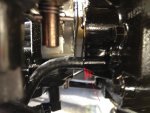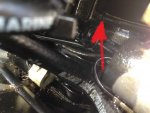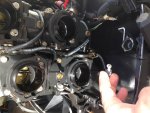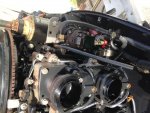jwall116
Petty Officer 3rd Class
- Joined
- Sep 4, 2015
- Messages
- 97
I do now know how accurate this fuel flow meter is but here are some rough numbers. I was out having too much fun to make small readings. The numbers seem slightly high to me, and that WOT # is a bit high. This is with a Navman 210 Fuel unit mounted vertical just before the engine.... Fuel bulb--Filter--Sensor--Engine. I Suggestions welcome!
4000 RPM 8.5GPH 25MPH 2.94MPG
4500 rpm 10GPH 30 MPH 3 MPG
5000 RPM 12 GPH 34 MPH 2.83 MPG
5800 RPM 17 GPH 40MPH. 2.3MPG
4000 RPM 8.5GPH 25MPH 2.94MPG
4500 rpm 10GPH 30 MPH 3 MPG
5000 RPM 12 GPH 34 MPH 2.83 MPG
5800 RPM 17 GPH 40MPH. 2.3MPG
Last edited:























